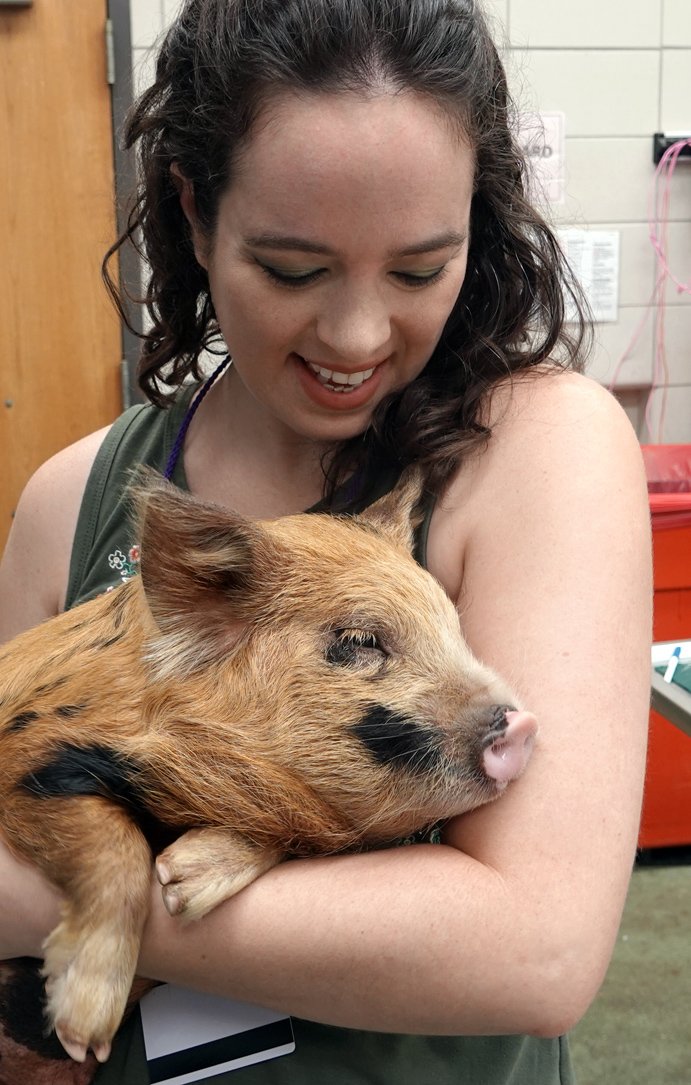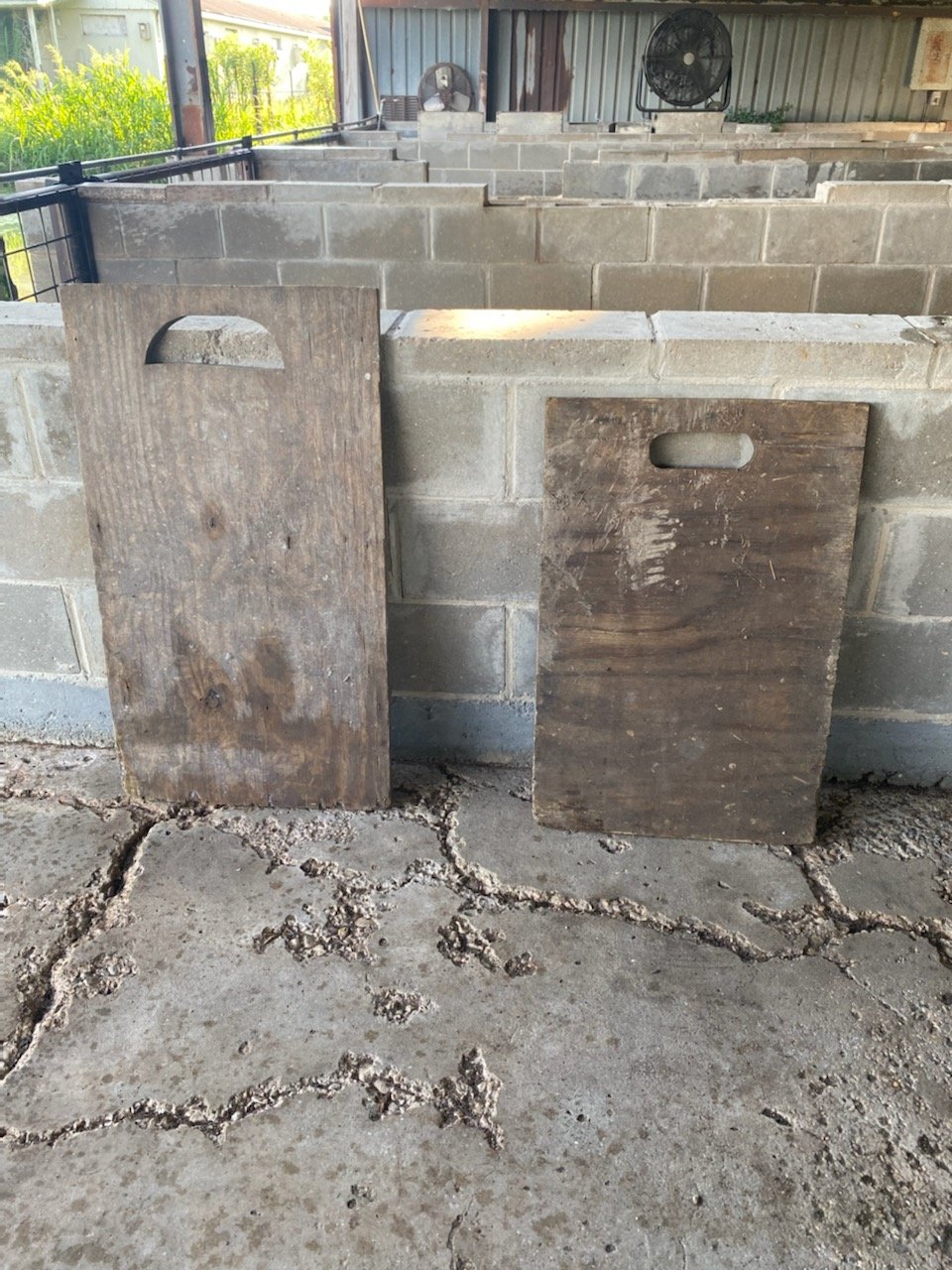Here are some in-progress photos of Seeing Double!
LSU Vet Med Artist Residency Artwork 7 Process
Here are some in-progress photos of Seeing Double!
betadine
Here are some in-progress photos of Seeing Double!

My seventh artwork almost didn’t get made on site - I knew what I wanted to do, but tried in vain to get my hands on a necessary component until Dr. Clare Scully came to the rescue!
Let me back up and explain it from the beginning. A very cute Kunekune pig named Tigger came in for observation and diagnosis and he left the next day feeling much better (and after I gave him a quick cuddle). With his owners’ permission, I decided I’d like to feature him in a painting or two! As I always do when I see a new species here at LSU Vet Med, I started asking about what veterinary materials they use specifically with that species - in this case, pigs. After hearing about a handful of items, the ones that seemed the most useful for my purposes were the pig sorting panels or “pig boards” and Dremel rotary tools (used to sand down hooves). I had brought a rotary tool with me as a sculpting aid already, so that was easy - but the pig sorting panel was a harder acquisition. This is because all the ones they had on hand were made out of plastic, and were pretty clearly intended to be easy to clean in a way that would make it harder to work archivally on top of and they were also obnoxiously colored. Wooden ones are regularly used, too, but there weren’t any in the large animal hospital as typically the wooden ones are just created on demand in a farm woodshop to save money and time.

I started asking all the large animal veterinarians, residents, and students if they knew of a source, put word out via my communications liaison Sandy Sarr, and posted a Craigslist ad… but a week had passed and my show exhibition was drawing closer so I thought I’d need to wait until I could ask my agricultural colleagues back in Iowa. And then Clare came into the room, we chatted, she said she’d see what she could do, and a couple of days later, she had done it! She had found two wooden pig boards for me that were the dimensions I had been looking for from another LSU site and said they were sufficiently used as to be destined for the scrap heap, so this was a much better use for them.
I happily adopted them both and gave them a light sanding and heavy cleaning. For the first composition I had in mind, the slightly smaller and more “standard” board worked better, so that’s what I went with! I would like to photograph it again when I get back home and have access to a large white background, but this image will do for now.
This is Seeing Double, a mixed media relief including Dremel counter relief, QuickCure Clay, PVP Prep Solution (betadine), and acrylic on a used pig board / sorting panel, 29.75x19.25x1.25”, 2022.

I tend to be pretty bad about taking process photos, but I’ve been trying to be more intentional about it for this residency! Here are several images of Fortification in progress, culminating in the finished artwork.
I always aim to capture a sense of place or atmosphere in my residencies, and in this artist residency at the LSU School of Veterinary Medicine I have decided to incorporate medicines, pathology and histology stains, as well as veterinary chemicals, tools, and resources into each of my pieces as art media. (I have no idea how archival some will be - particularly how lightfast and stable the pigmentation of the medicines, stains, and chemicals is - but the evolution of how the artworks age will be interesting to witness and document, too!)
As you may already know, I work on multiple pieces of artwork simultaneously, so the first piece I start isn’t always the first to finish. This piece is actually the second one I began! It is of a Mississippi kite which is a beautiful raptor, and there were three here upon my arrival - two wild kites and one that has been habituated as an ambassador or resident raptor. The depicted wild bird is in a defensive stress posture, trying to look as big as possible so as to protect itself from predators.
This artwork incorporates ZooMed's PVP Prep Solution: povidone-iodine 10% topical antiseptic (also known as Betadine) and Integrative Medicine's AcuZone smokeless moxa-rolls for both the background and feet. There’s also a bit of the Betadine on the eyes over a base of acrylic.
I have titled this piece Fortification, and it is a mixed media painting including the aforementioned veterinary materials as well as acrylic and cornstarch on basswood panel, 20x20x1.5”, 2022.